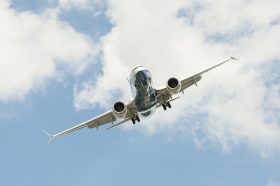
While pension funds may own traditional asset classes such as buildings, bridges or toll roads, aviation leasing is another asset class available to sophisticated investors.
An aircraft is a good investment because it’s a fungible asset, says Justin Bradburn, principal and head of aviation at CarVal Investors. “And what I mean by that is you can move it.”
Compare this to other asset classes, like real estate — if an investor owns a building in a city that suffers a property market collapse, they’re stuck. “With aviation, if the aviation market collapses in Vietnam and you have yourself a plane there, you can simply go in, repossess your plane if the credit’s defaulted and then move it to Europe and lease it to somebody else there.”
Another benefit of aviation leasing is that, over the last 20 years, it has showed low correlation to the market, he adds, noting it also has a low correlation to airlines.
There’s a misconception that aircraft leasing is in the same risk bucket as investing in airlines, Bradburn says. “Aircraft leasing is fundamentally a much more stable industry.”
There are long-term cash flows associated with aviation leases. In addition, downturns in aviation markets have been more muted than other real asset classes. And, aircrafts benefit from global demand.
“They’re generally not specifically exposed to individual local market dynamics,” says Bradburn. “They get to benefit from global GDP growth and, as long as global GDP growth proves to be relatively stable over the long term, which it does, aircraft tend to benefit from that global stability.”
The aviation market is also relatively predictable. It has only a couple of major manufacturers, which are public companies. “You have a really great sense of what’s flying around in the market today and what production looks like for the next five to 10 years.”
There’s also a relationship between aviation and GDP, which can allow an investor to predict the demand for aircrafts and measure the supply that’s coming into market. “And that will give you a picture of oversupply and undersupply out into the future,” says Bradburn.
Knowledge about supply and demand can also allow an investor to be positioned defensively when the market is approaching a peak.
737 Max groundings and coronavirus
When aviation authorities grounded Boeing Co.’s 737 Max jets, it played into the supply-demand analysis dynamic.
Before the incident, the industry was entering a period of oversupply, Bradburn notes. “When the Max [grounding] happened, I think most of us thought, ‘This is a three- to six-month event. The plane is going to get back up and flying again. It’s not going to be something that drags out.’ It’s definitely dragged out longer than I think most would have expected.”
The result was a removal of supply from the market. And now, hundreds of planes are going to come back to market relatively quickly when the planes start flying again, says Bradburn, noting this has pushed the oversupply out by about a year. “I think, what it is going to do is it’s going to cause a slightly more protracted oversupply situation as all those planes come back into the market very quickly, but then it will return back to the kind of cycle that we were expecting over the next two to three years.”
The aviation industry is also feeling the impact of the coronavirus.
It’s possible to look at historical precedents to get a sense of what this will mean to the aviation market, Bradburn says. On Feb. 20, 2020, the International Air Transport Association put out an analysis on the impact of coronavirus that assumed Asia would go from 4.8 per cent traffic to negative 8.2 per cent based on the impact of the severe acute respiratory syndrome outbreak in 2003. On a global basis, this takes global traffic from 4.1 per cent to negative 0.6 per cent.
The effect of coronavirus, combined with the impact of the 737 Max grounding, will mean a more protracted downturn, he says.
Accessing the asset class
In addition to leasing aircrafts directly, pension funds can access the aviation leasing asset class in a number of ways, including providing debt financing or investing in a fund that provides debt financing, as well as investing in aircraft asset-backed securities, Bradburn notes.
Also, investors can get exposure to various stages of an aircraft’s lifecycle. For example, new aircrafts that are less than seven years old are a very liquid and stable market. At mid-life, when the aircraft is between seven and 15 years old, leases are much shorter. Finally, for aircrafts older than 15 years old, it may make more sense to break them down to their component parts than to continue flying, he says.
Investing in young aircrafts with long leases and better credits is the best way to be defensive, notes Bradburn. “Having really long leases gives you an awful lot of cash flow insulation to any kind of shock, but it also makes them very easy to sell because you’ve got long contractual cash flows that you can present a seller. And then the final thing is that, if you do go into a downturn, you can ride that downturn out because you’ve got duration in your investment.”
